Category Inclusive Speaking Tips
Shared on Instagram and archived here, this section shares a series of tips and tricks to become a more inclusive communication professional from your platform of choice (virtual or in-person events).
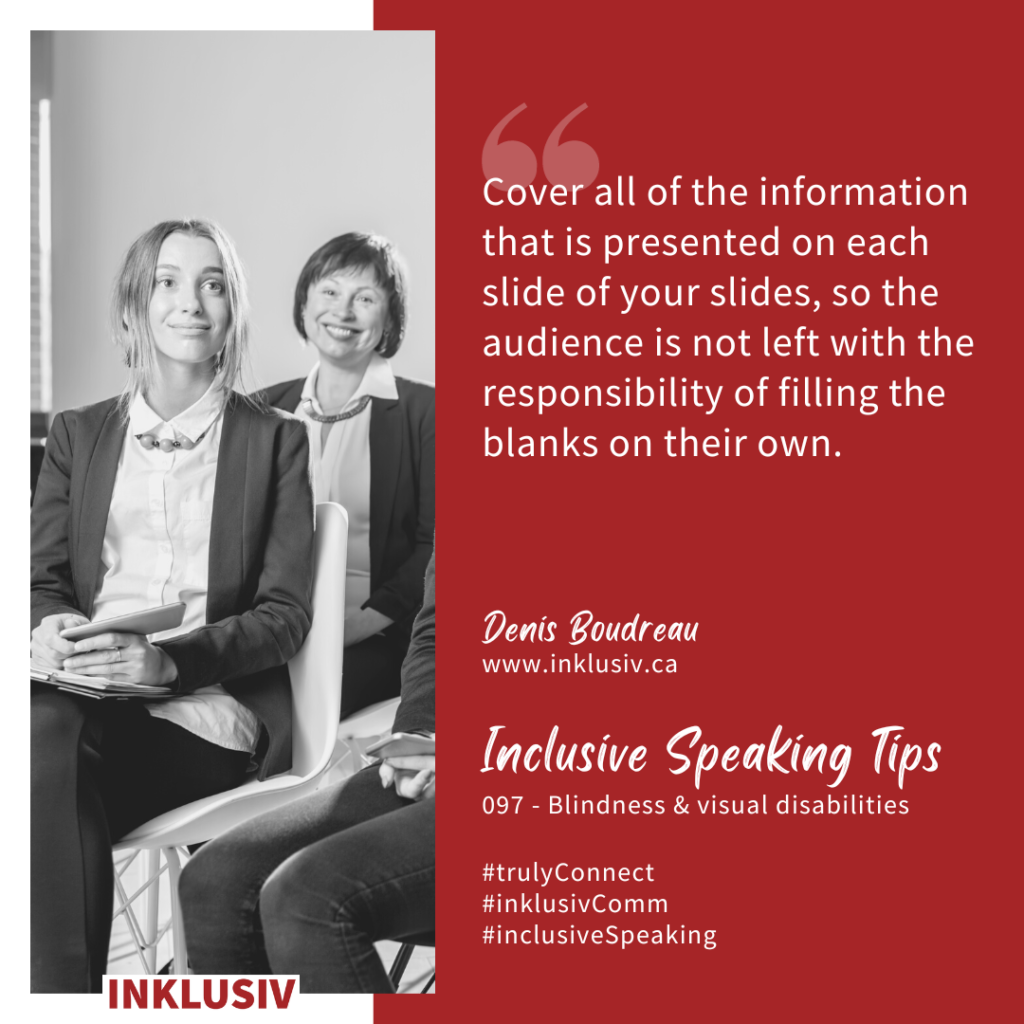

“Cover all of the information that is presented on each slide of your slides, so the audience is not left with the responsibility of filling the blanks on their own.”
More details about Inclusive Speaking Tip #097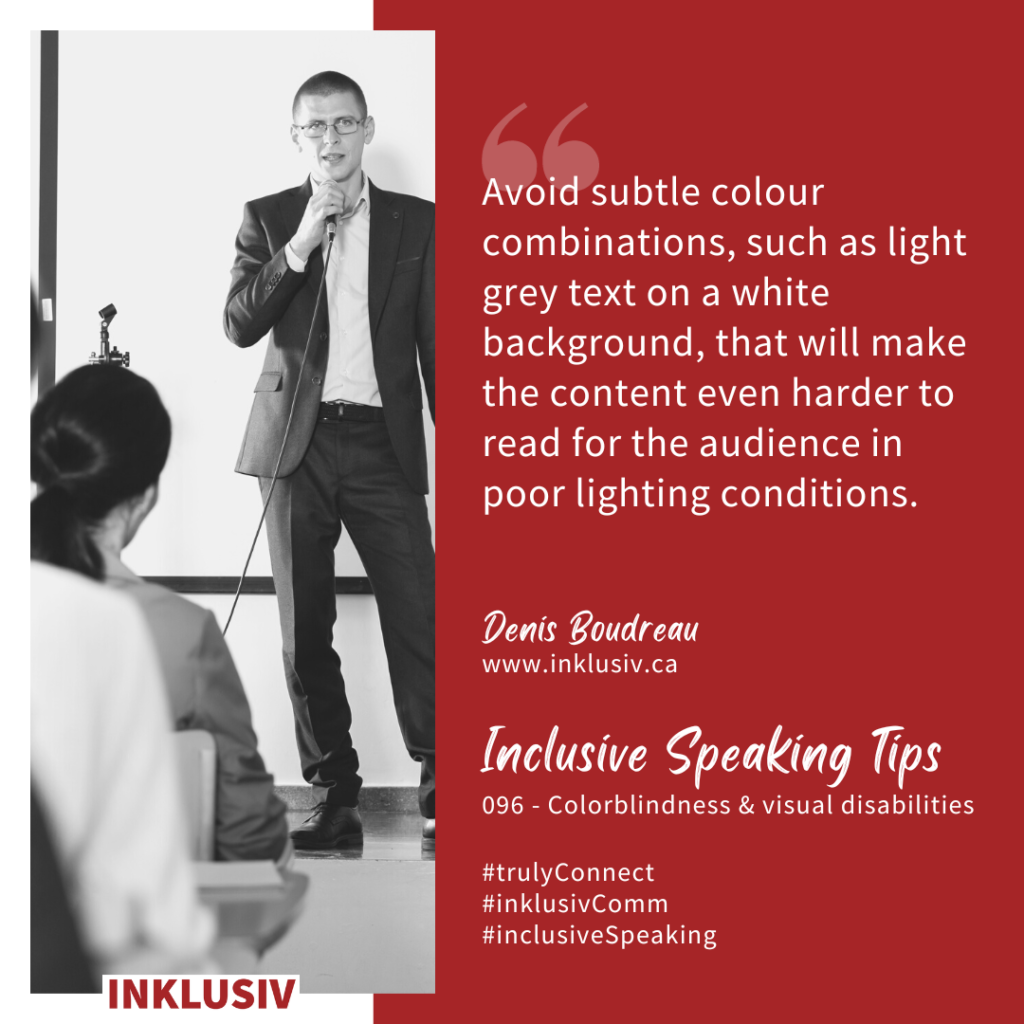

“Avoid subtle colour combinations, such as light grey text on a white background, that will make the content even harder to read for the audience in poor lighting conditions.”
More details about Inclusive Speaking Tip #096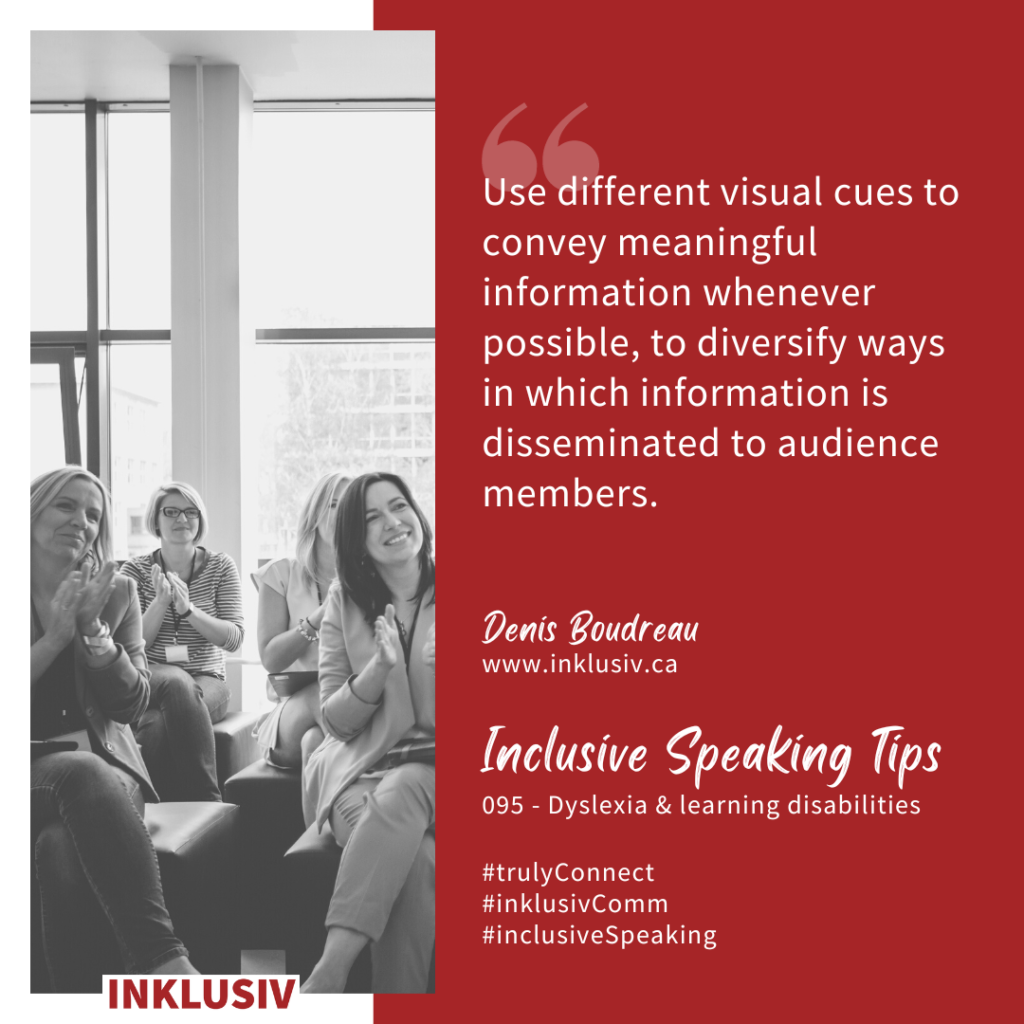

“Use different visual cues to convey meaningful information whenever possible, to diversify ways in which information is disseminated to audience members.”
More details about Inclusive Speaking Tip #095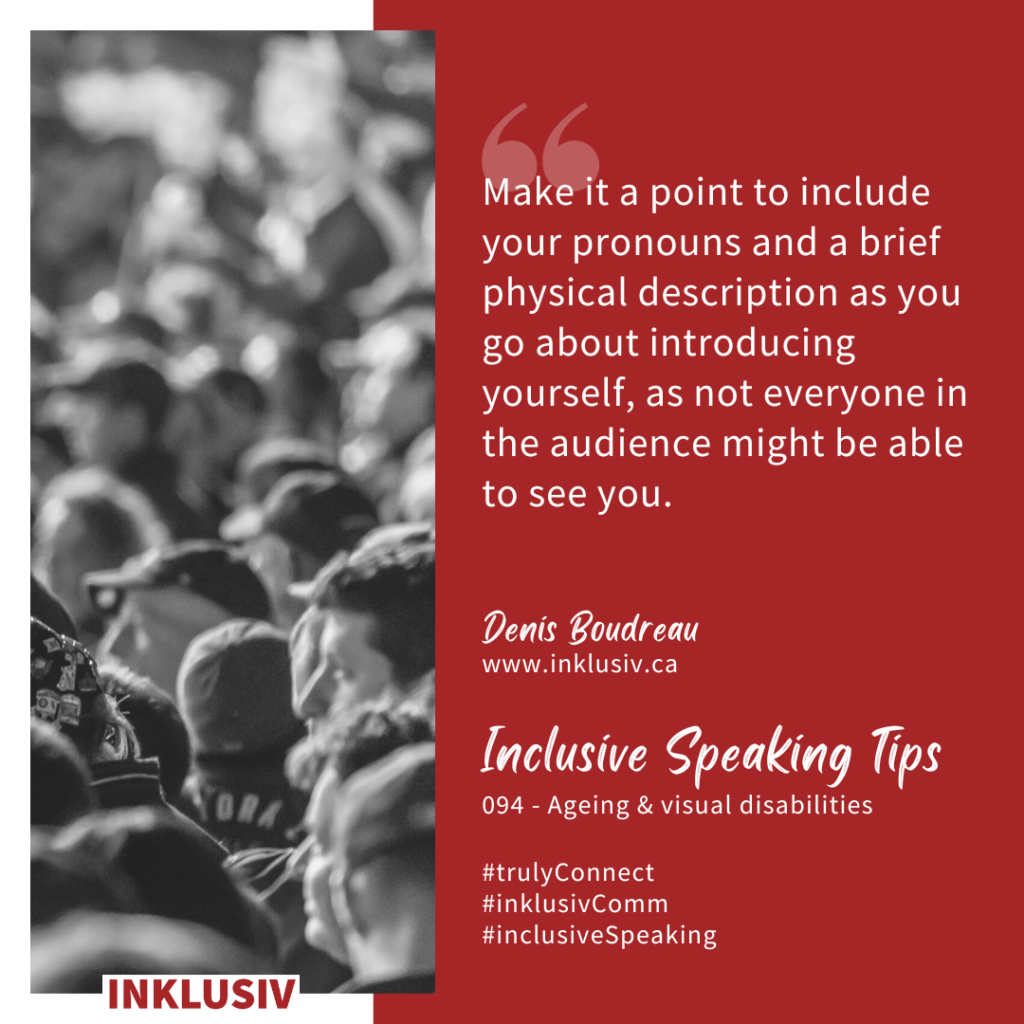

“Make it a point to include your pronouns and a brief physical description as you go about introducing yourself, as not everyone in the audience might be able to see you.”
More details about Inclusive Speaking Tip #094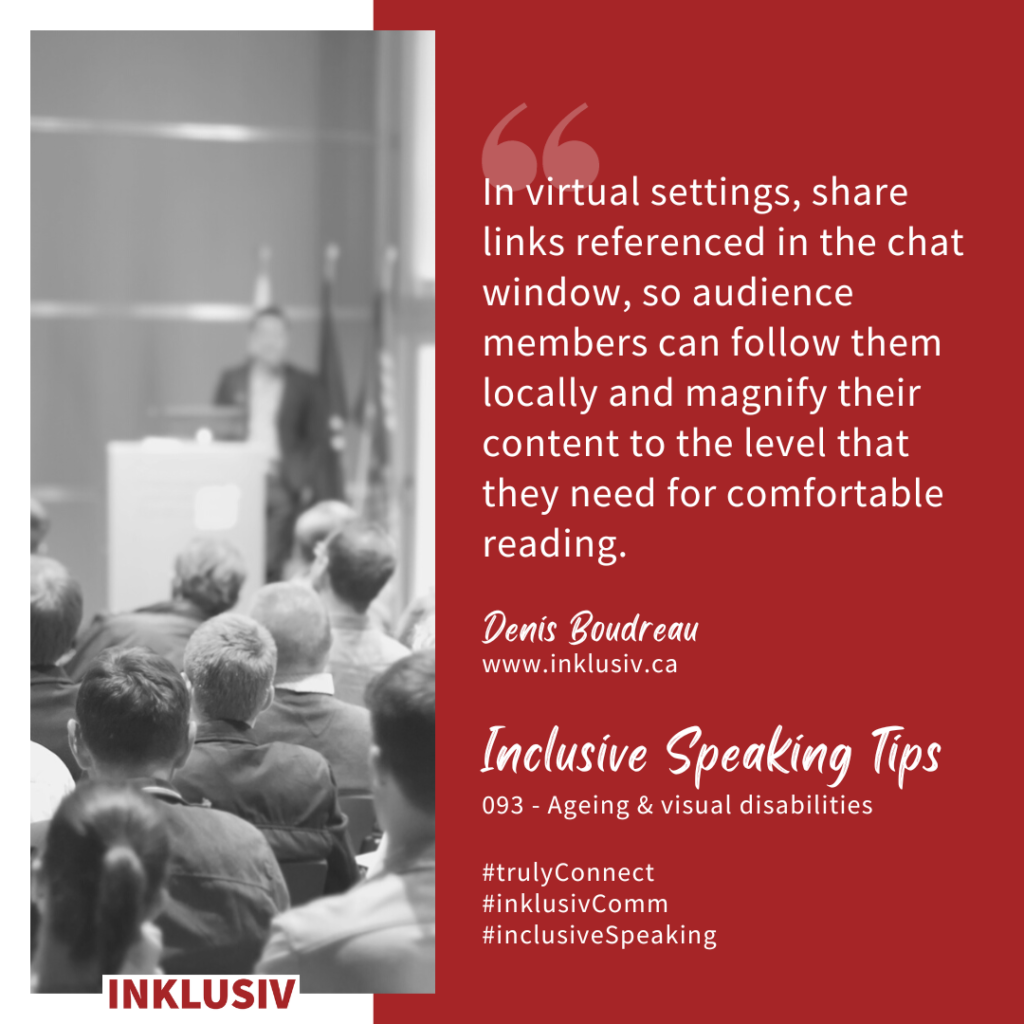

“In virtual settings, share links referenced in the chat window, so audience members can follow them locally and magnify their content to the level that they need for comfortable reading.”
More details about Inclusive Speaking Tip #093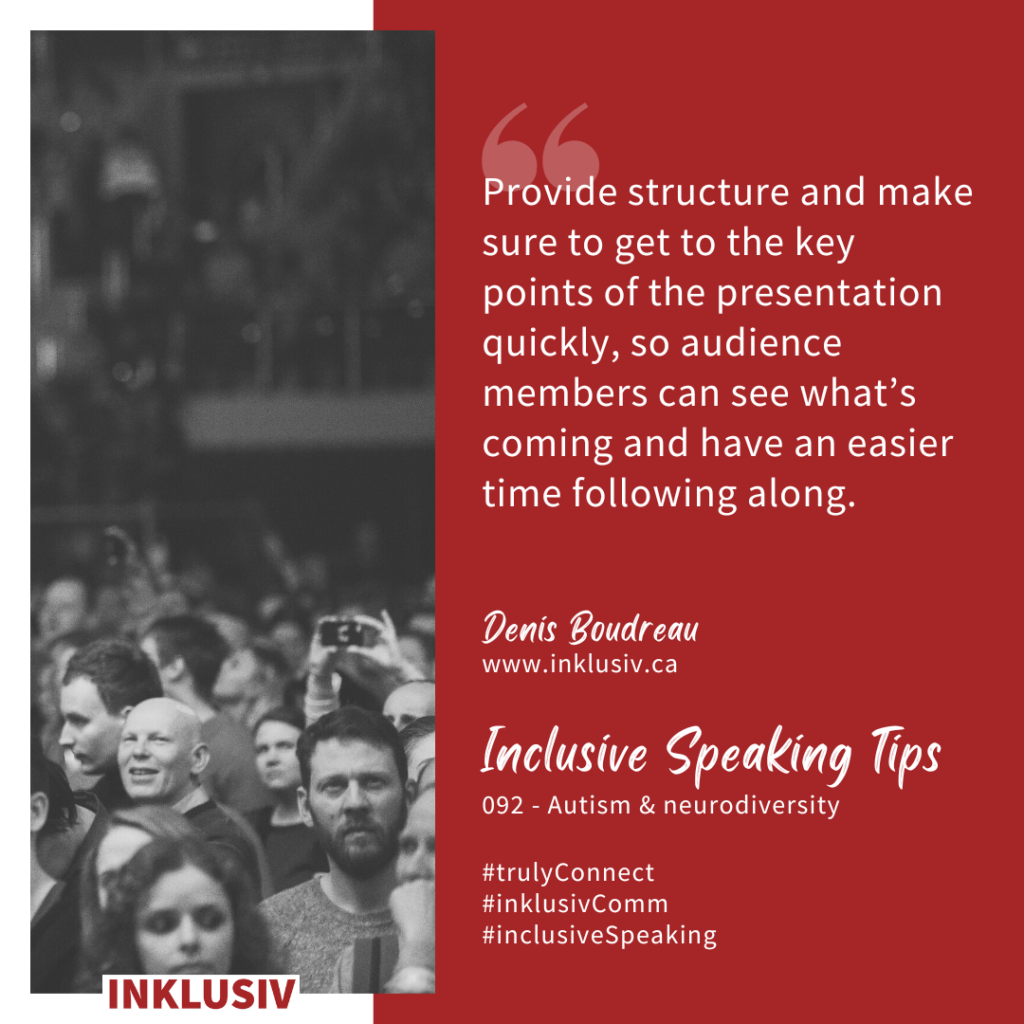

“Provide structure and make sure to get to the key points of the presentation quickly, so audience members can see what’s coming and have an easier time following along.”
More details about Inclusive Speaking Tip #092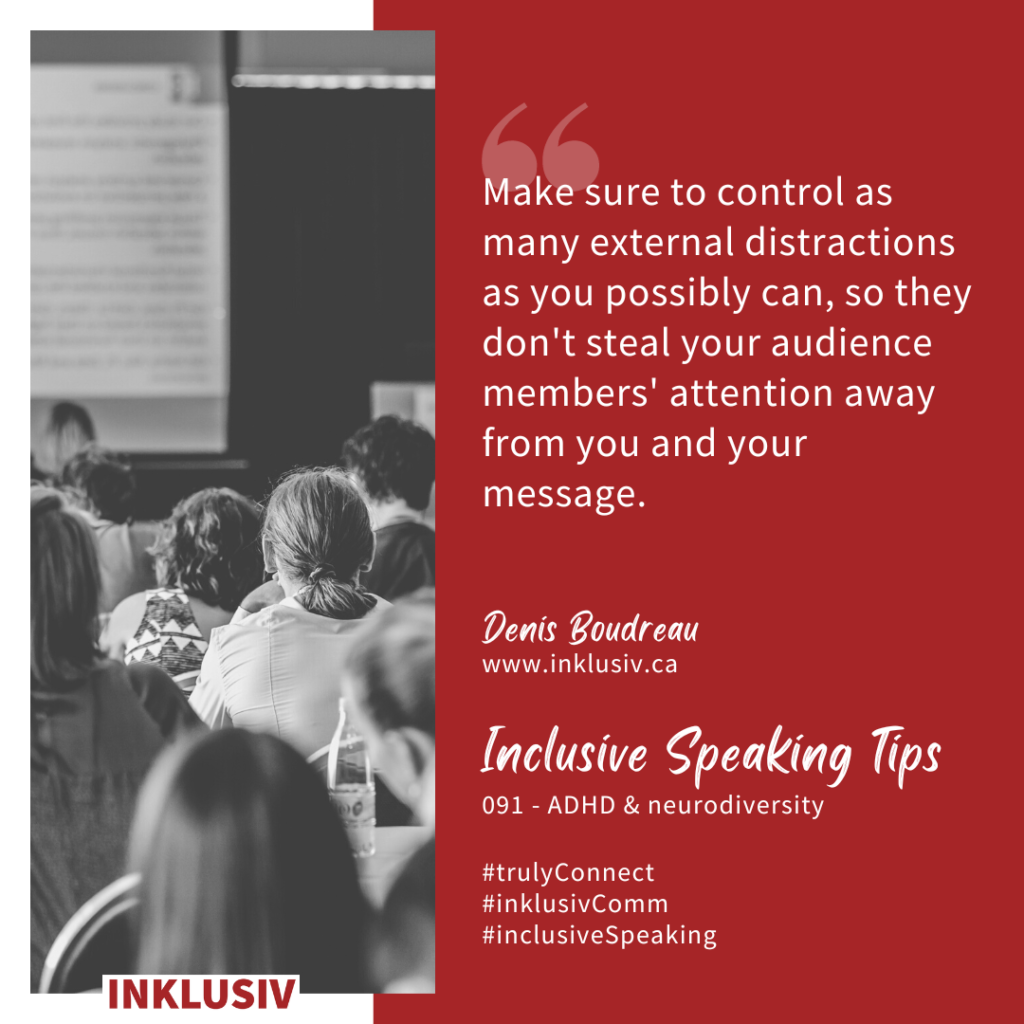

“Make sure to control as many external distractions as you possibly can, so they don’t steal your audience members’ attention away from you and your message.”
More details about Inclusive Speaking Tip #091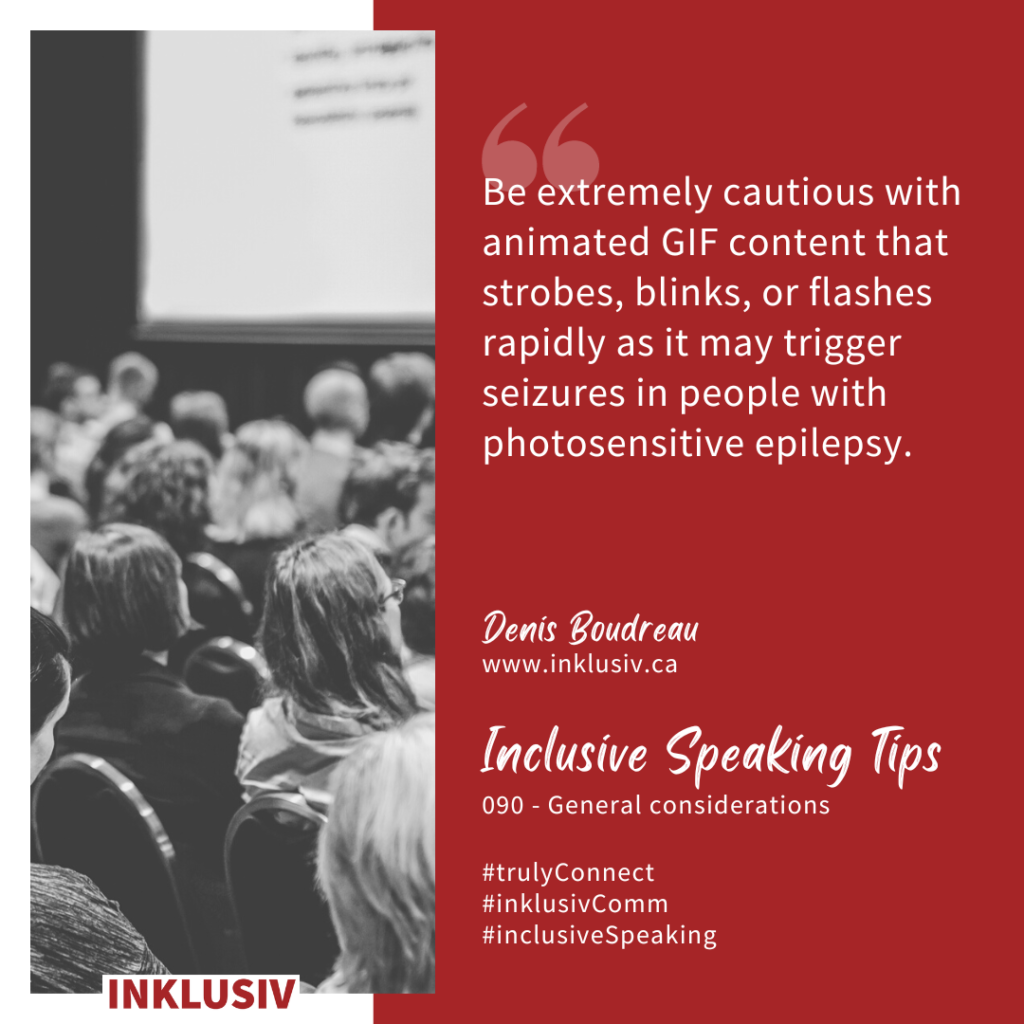

“Be extremely cautious with animated GIF content that strobes, blinks, or flashes rapidly as it may trigger seizures in people with photosensitive epilepsy.”
More details about Inclusive Speaking Tip #090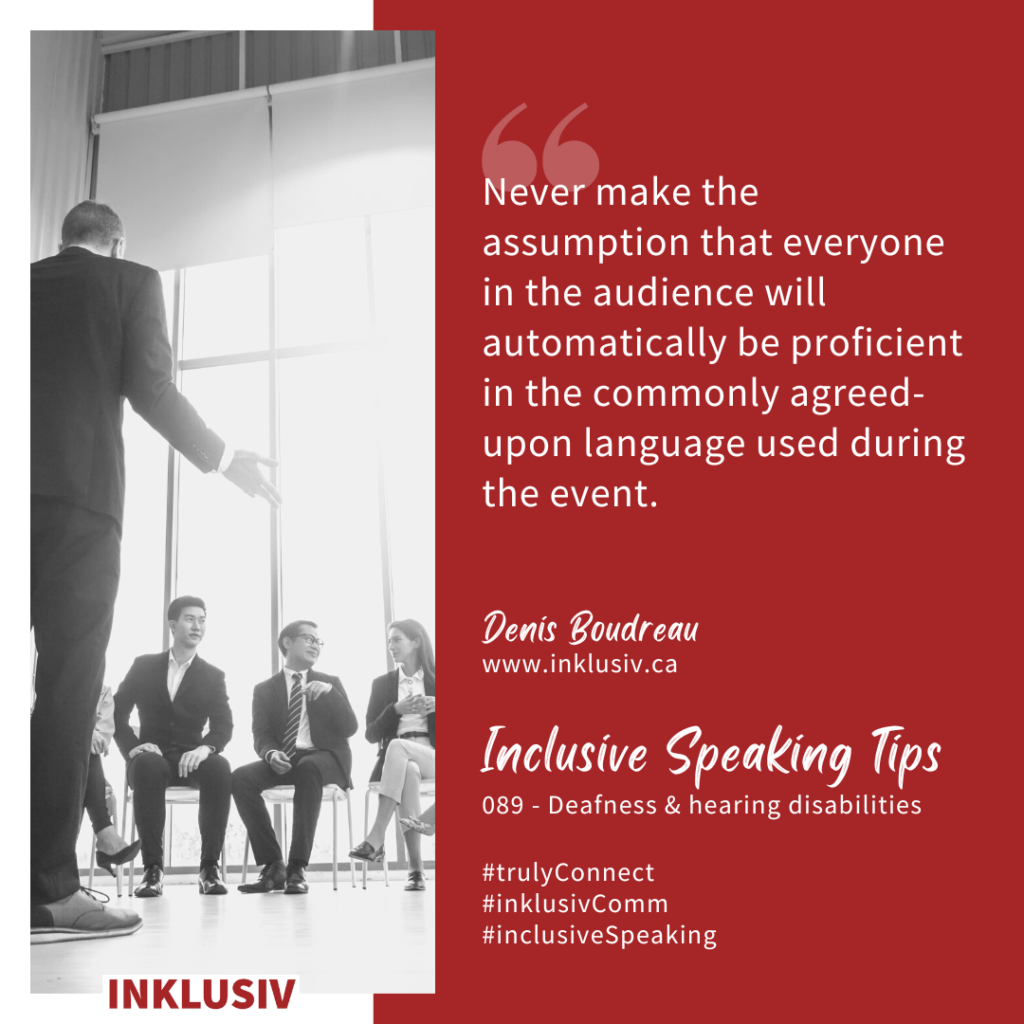

“Never make the assumption that everyone in the audience will automatically be proficient in the commonly agreed-upon language used during the event.”
More details about Inclusive Speaking Tip #089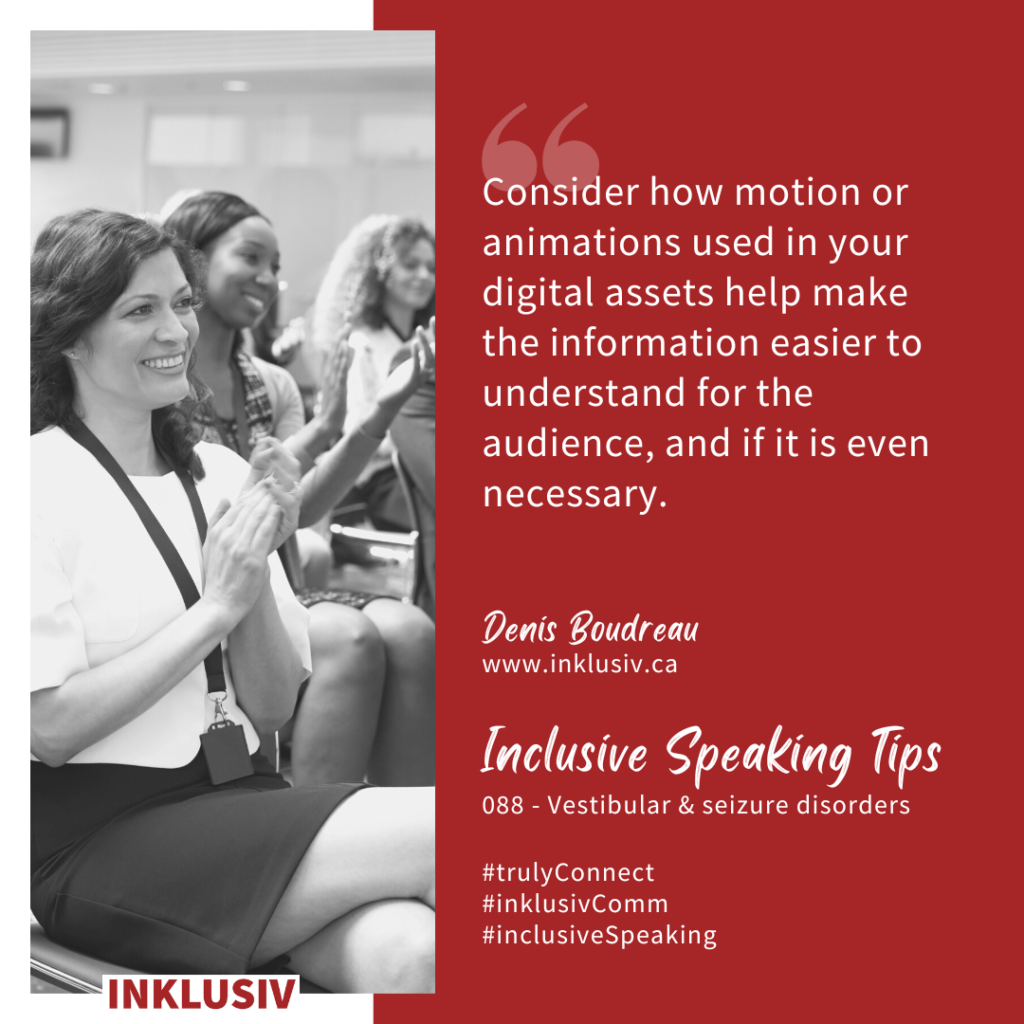

“Consider how motion or animations used in your digital assets help make the information easier to understand for the audience, and if it is even necessary.”
More details about Inclusive Speaking Tip #088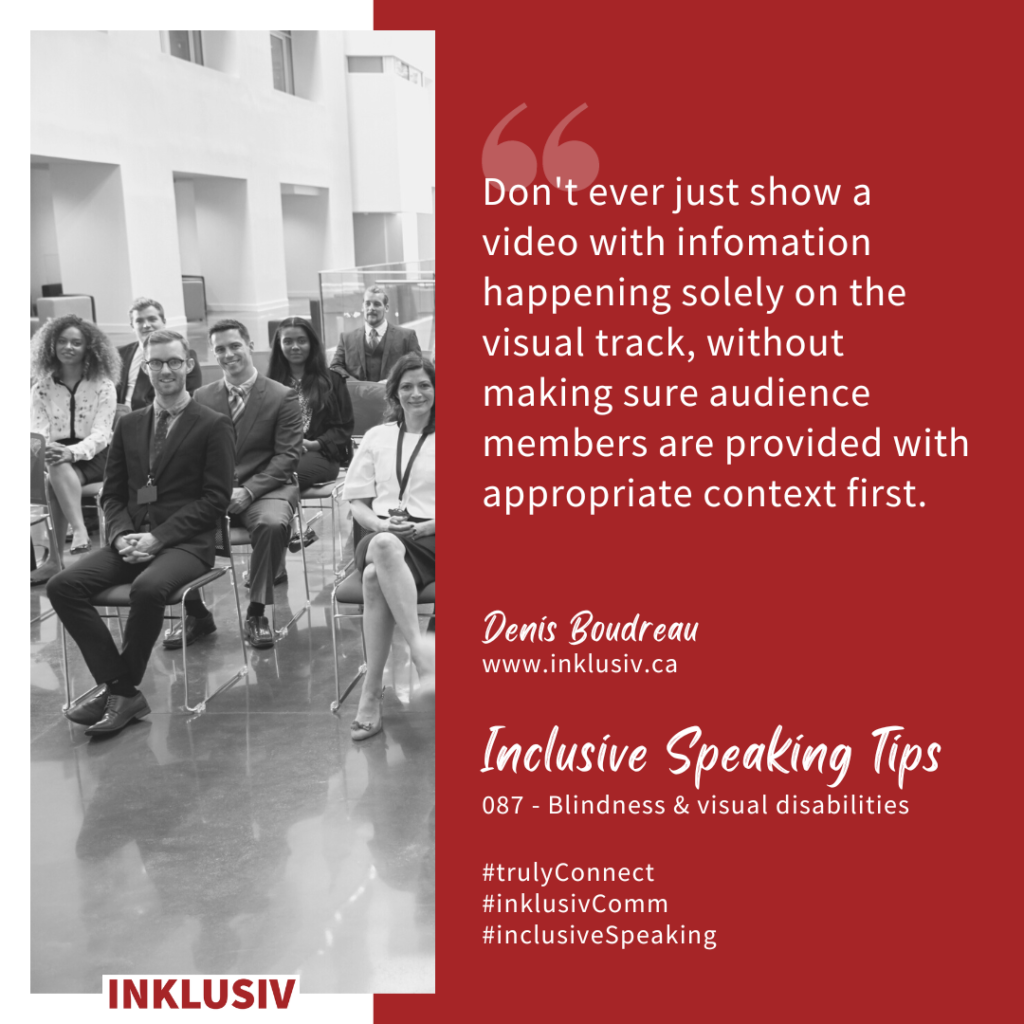

“Don’t ever just show a video with infomation happening solely on the visual track, without making sure audience members are provided with appropriate context first.”
More details about Inclusive Speaking Tip #087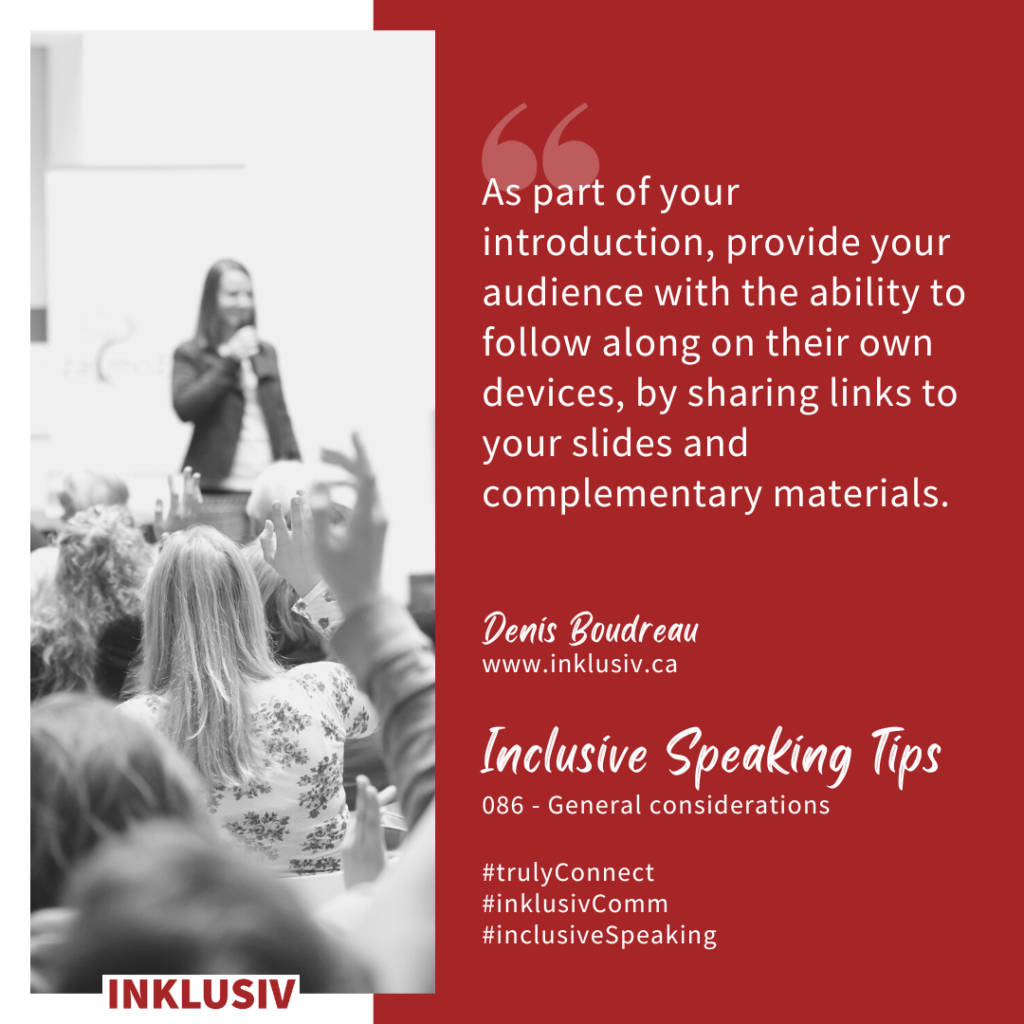

“As part of your introduction, provide your audience with the ability to follow along on their own devices, by sharing links to your slides and complementary materials.”
More details about Inclusive Speaking Tip #086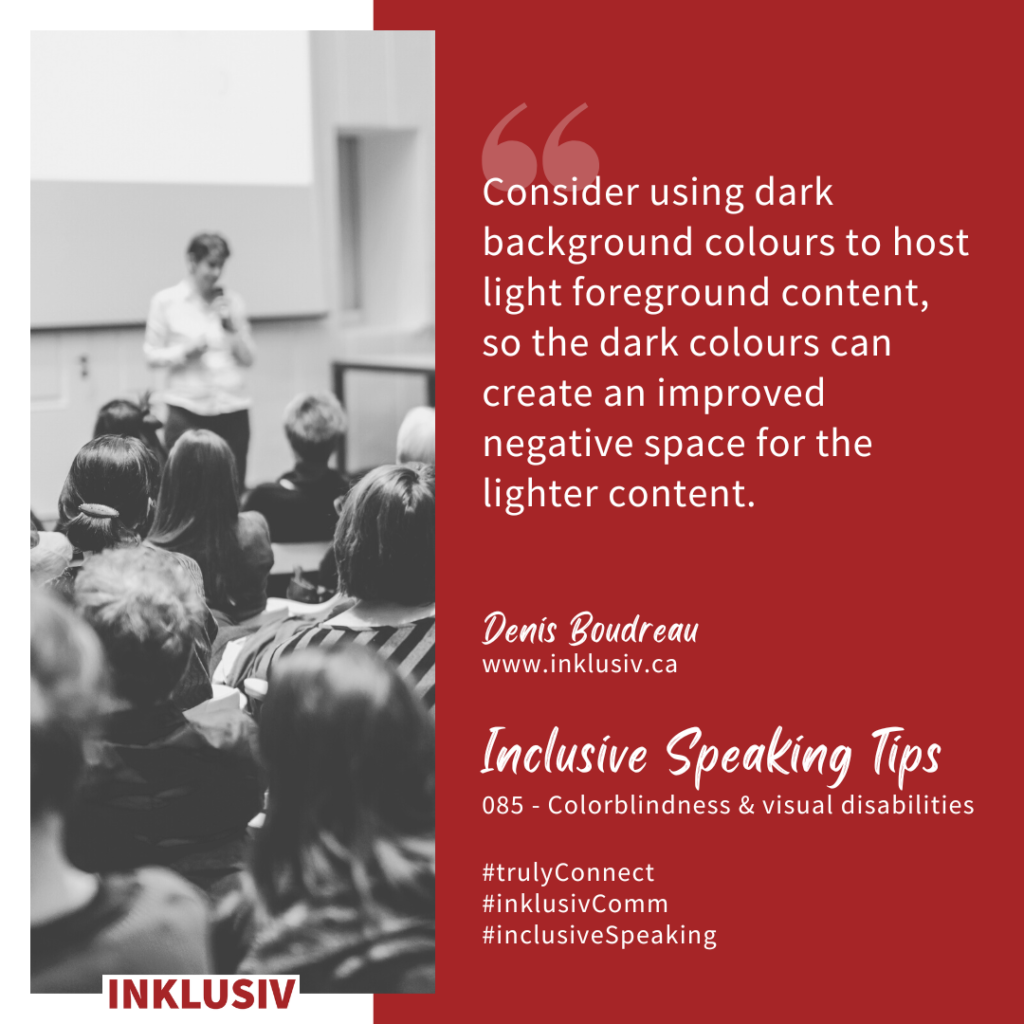

“Consider using dark background colours to host light foreground content, so the dark colours can create an improved negative space for the lighter content.”
More details about Inclusive Speaking Tip #085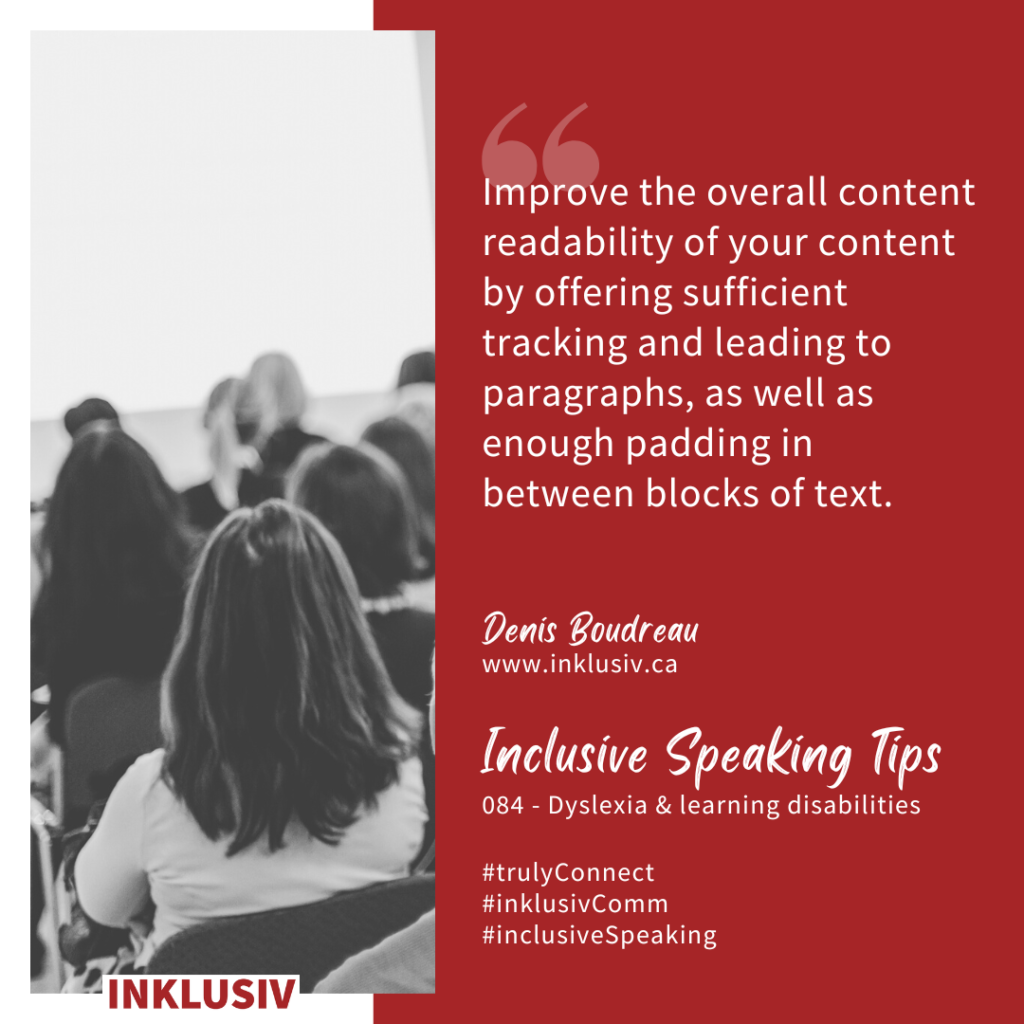

“Improve the overall content readability of your content by offering sufficient tracking and leading to paragraphs, as well as enough padding in between blocks of text.”
More details about Inclusive Speaking Tip #084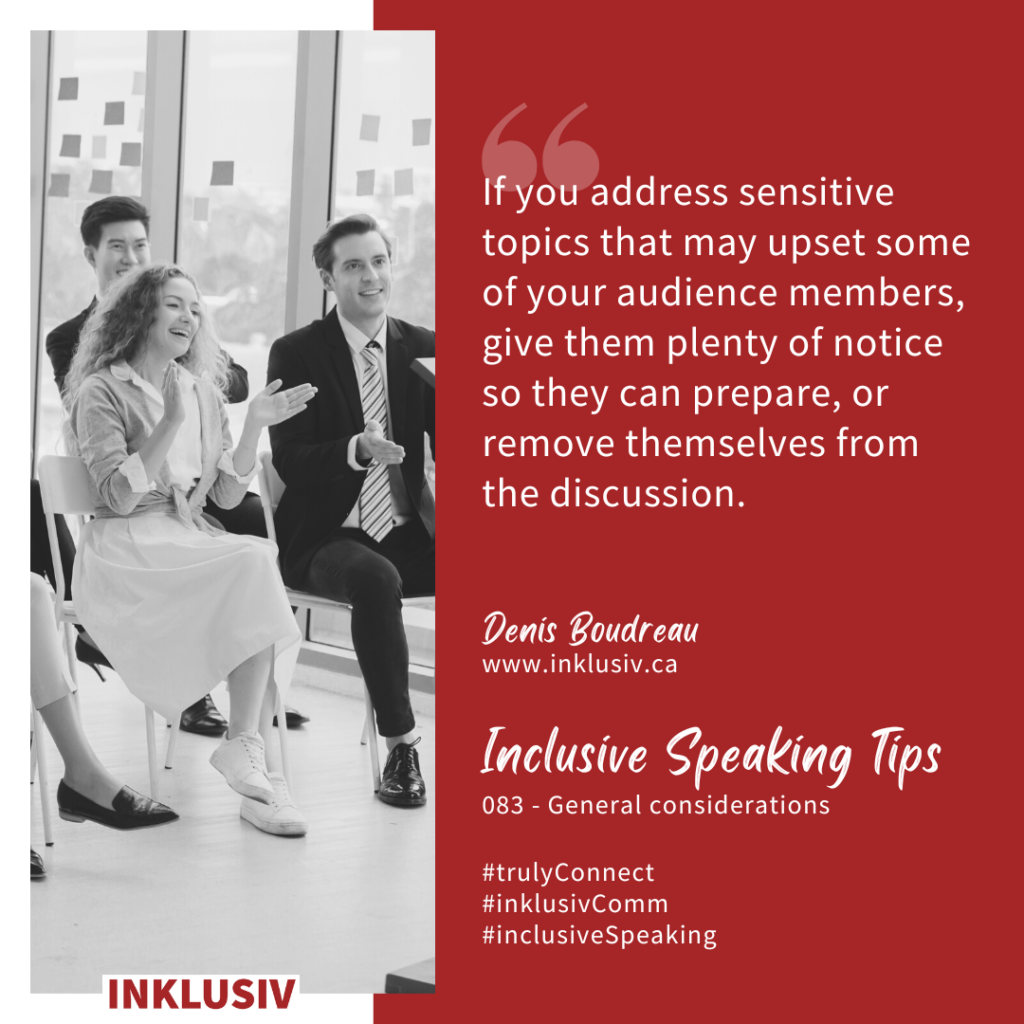

“If you address sensitive topics that may upset some of your audience members, give them plenty of notice so they can prepare, or remove themselves from the discussion.”
More details about Inclusive Speaking Tip #083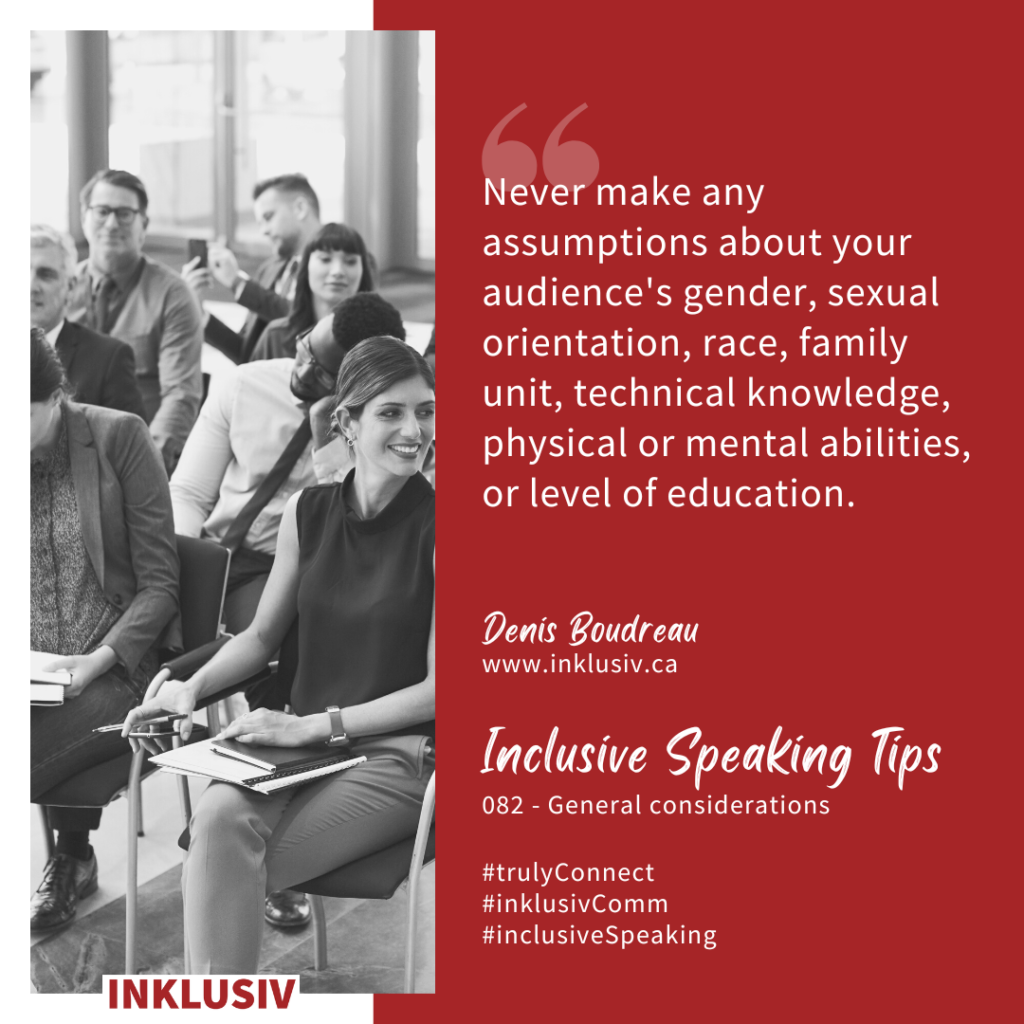

“Never make any assumptions about your audience’s gender, sexual orientation, race, family unit, technical knowledge, physical or mental abilities, or level of education.”
More details about Inclusive Speaking Tip #082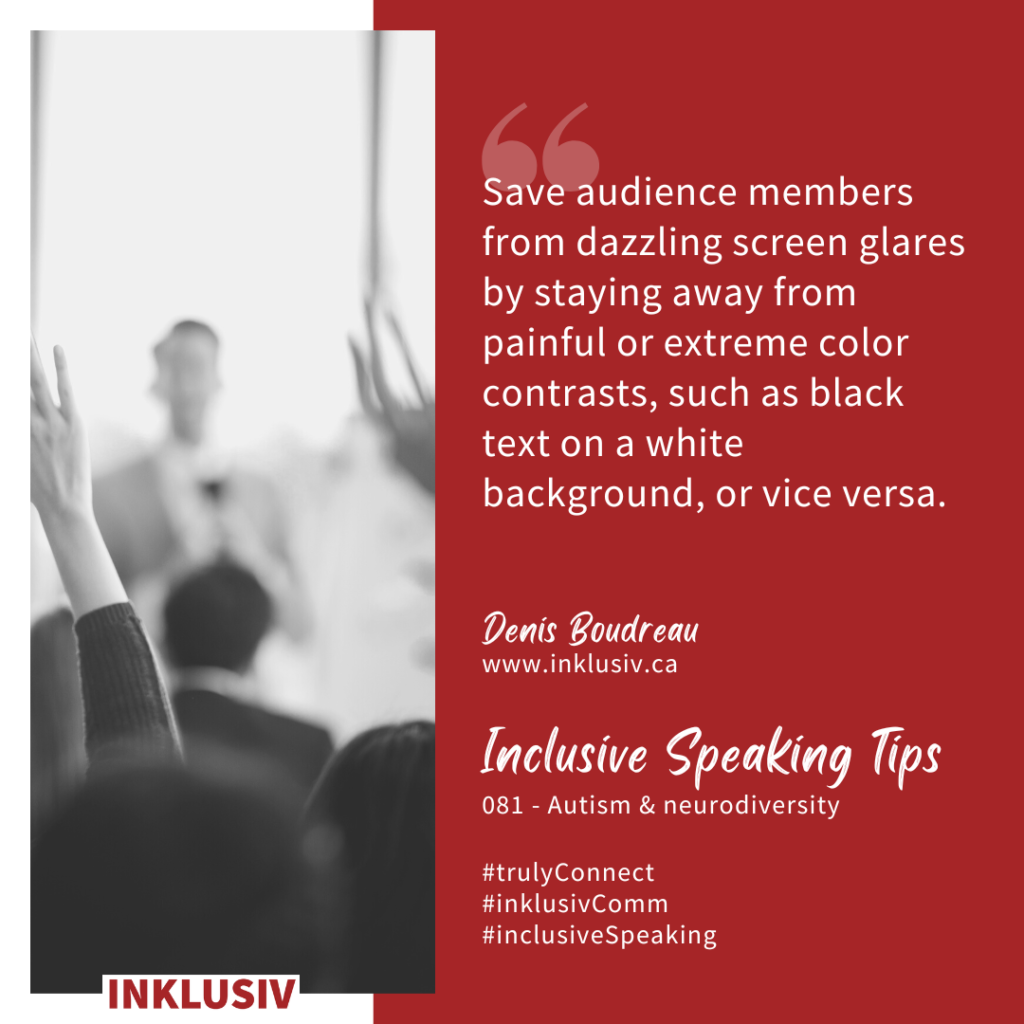

“Save audience members from dazzling screen glares by staying away from painful or extreme color contrasts, such as black text on a white background, or vice versa.”
More details about Inclusive Speaking Tip #081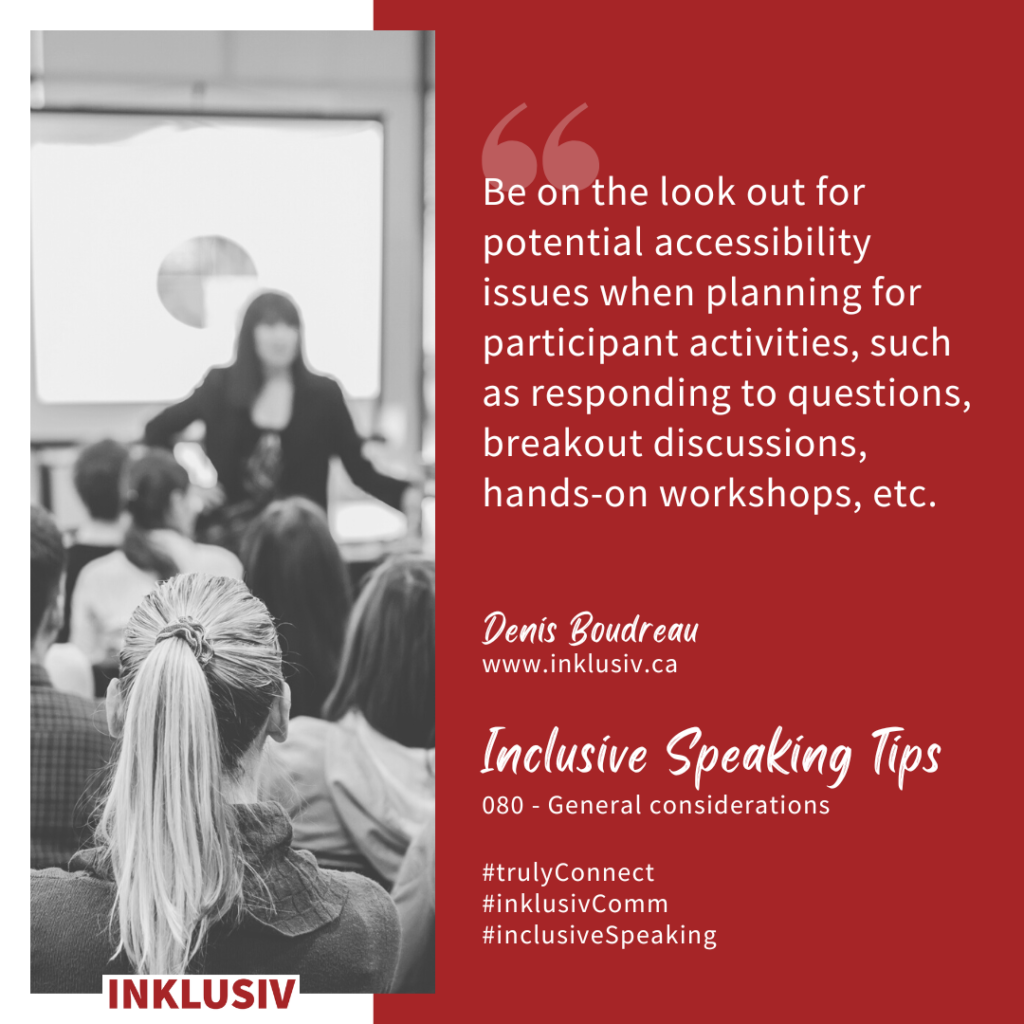

“Be on the look out for potential accessibility issues when planning for participant activities, such as responding to questions, breakout discussions, hands-on workshops, etc.”
More details about Inclusive Speaking Tip #080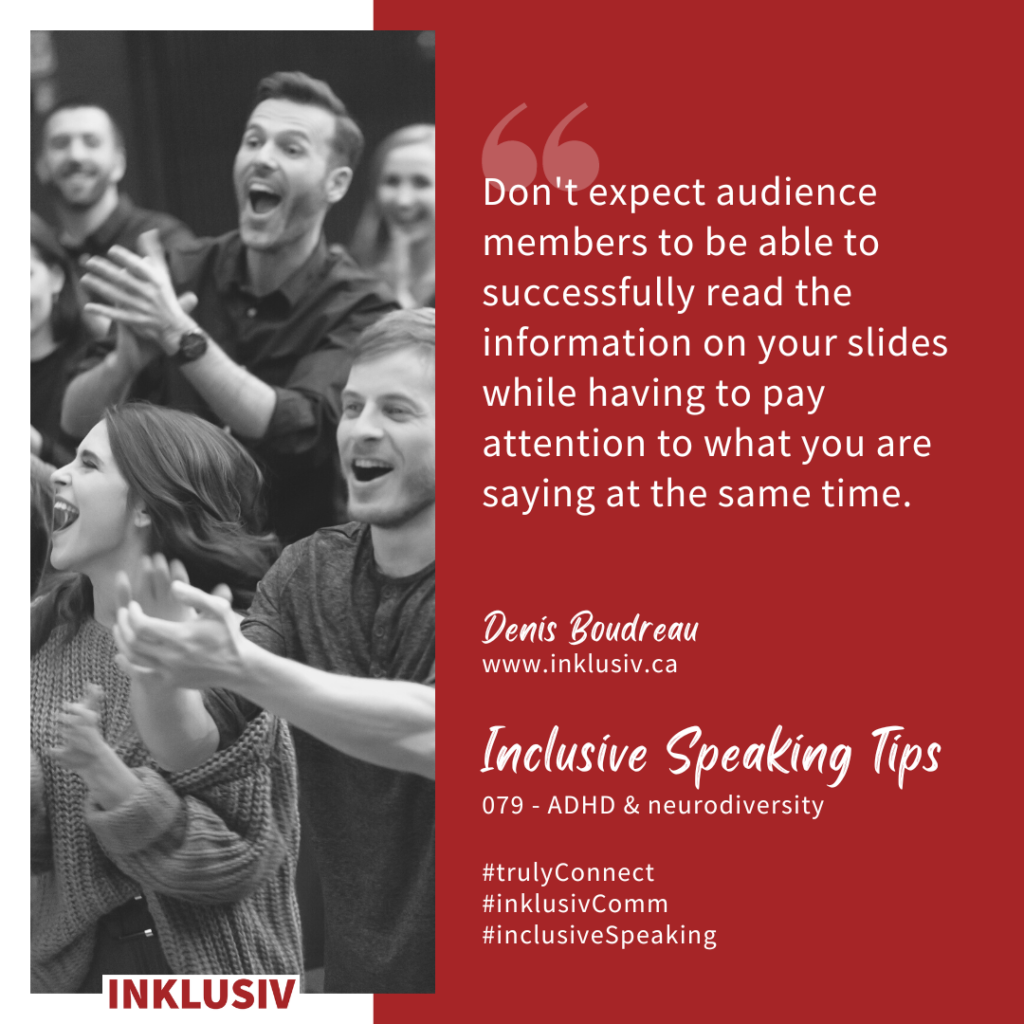

“Don’t expect audience members to be able to successfully read the information on your slides while having to pay attention to what you are saying at the same time.”
More details about Inclusive Speaking Tip #079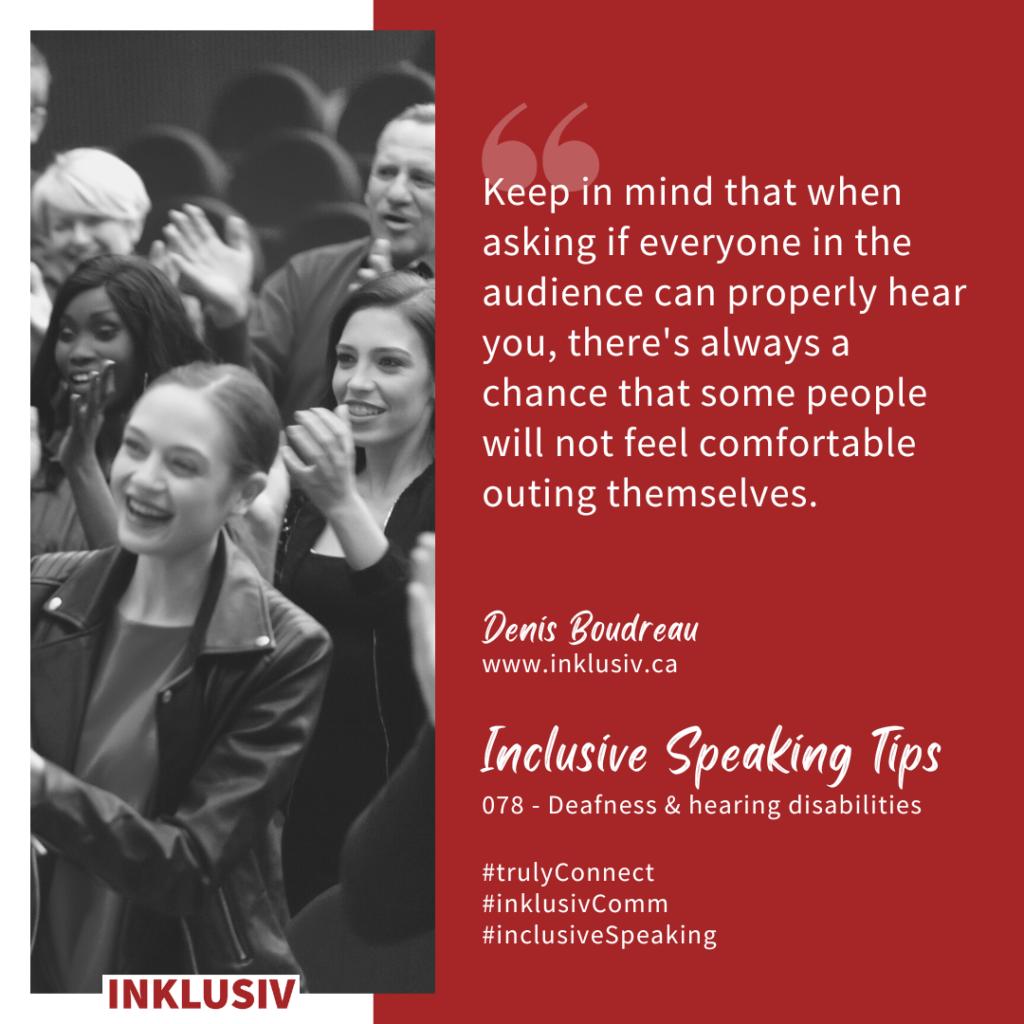

“Keep in mind that when asking if everyone in the audience can properly hear you, there’s always a chance that some people will not feel comfortable outing themselves.”
More details about Inclusive Speaking Tip #078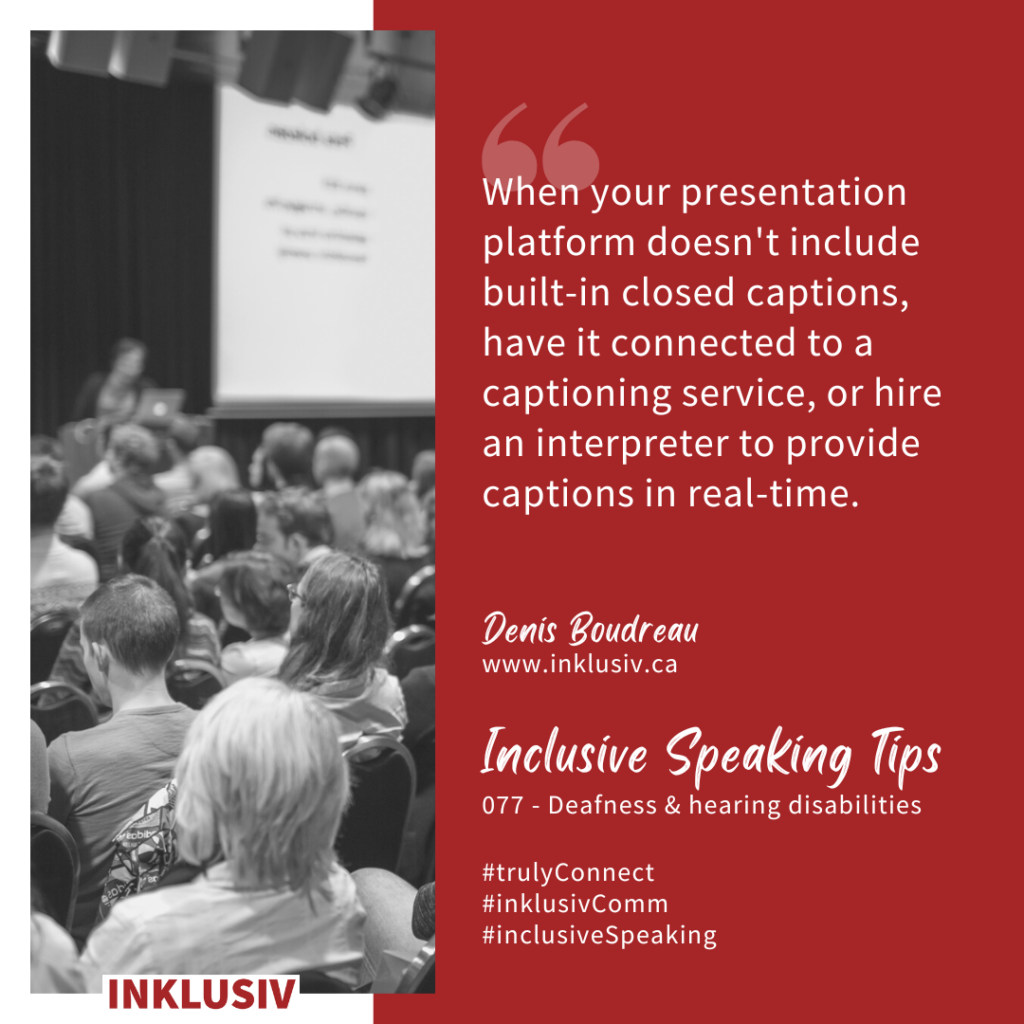

“When your presentation platform doesn’t include built-in closed captions, have it connected to a captioning service, or hire an interpreter to provide captions in real-time.”
More details about Inclusive Speaking Tip #077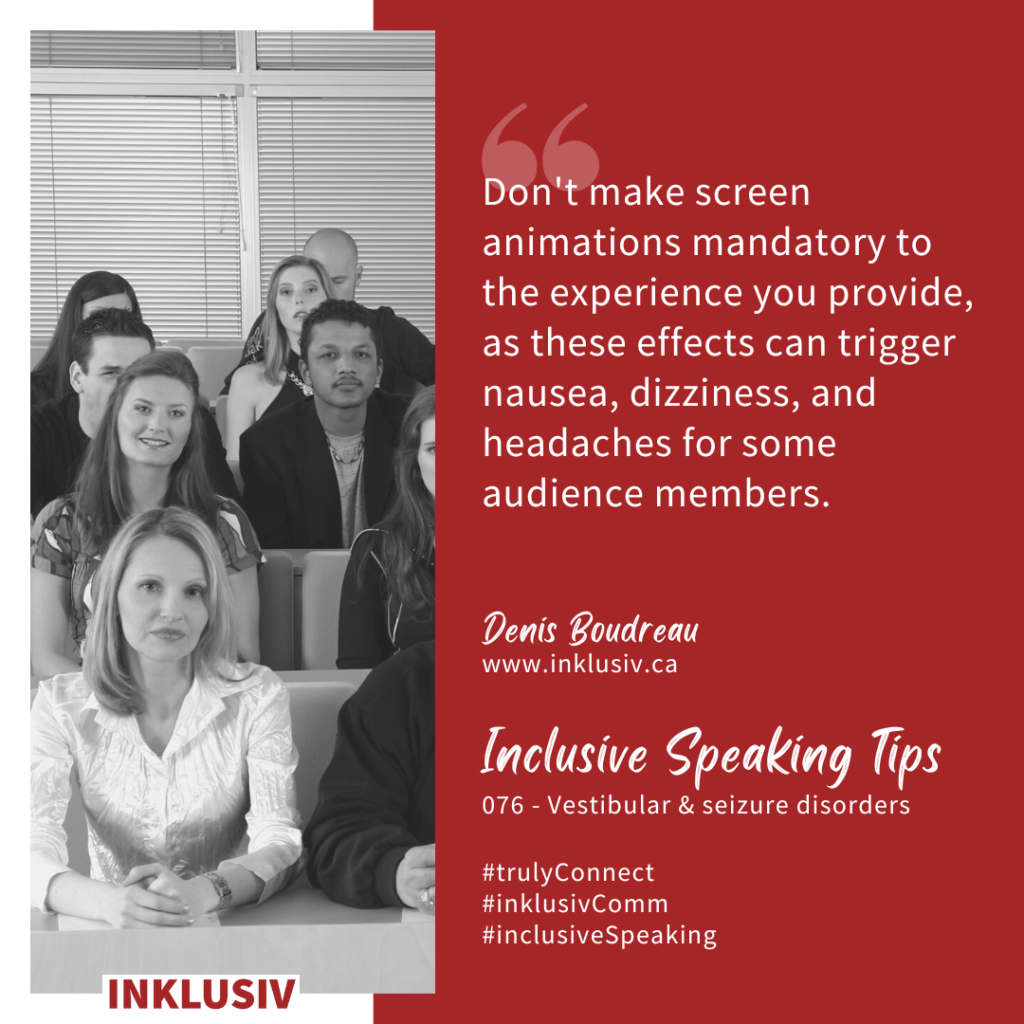

“Don’t make screen animations mandatory to the experience you provide, as these effects can trigger nausea, dizziness, and headaches for some audience members.”
More details about Inclusive Speaking Tip #076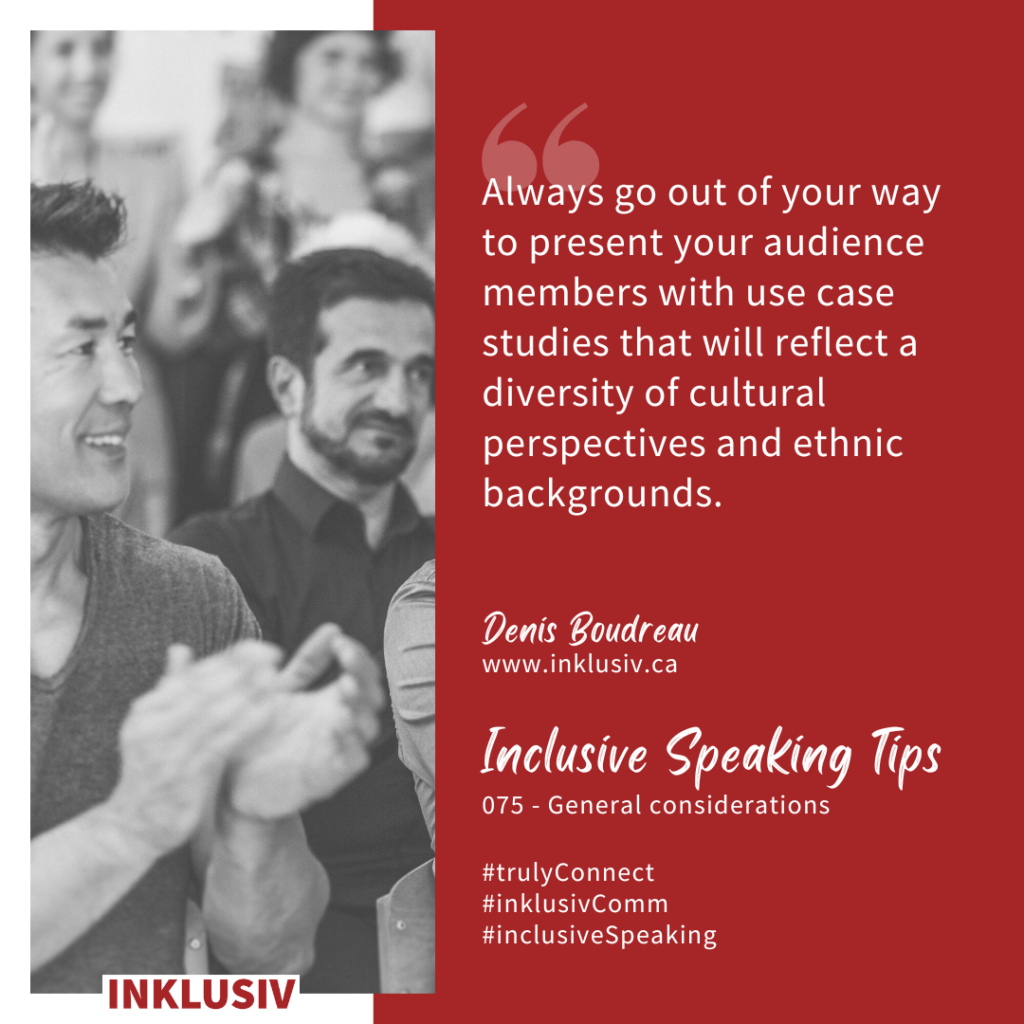

“Always go out of your way to present your audience members with use case studies that will reflect a diversity of cultural perspectives and ethnic backgrounds.”
More details about Inclusive Speaking Tip #075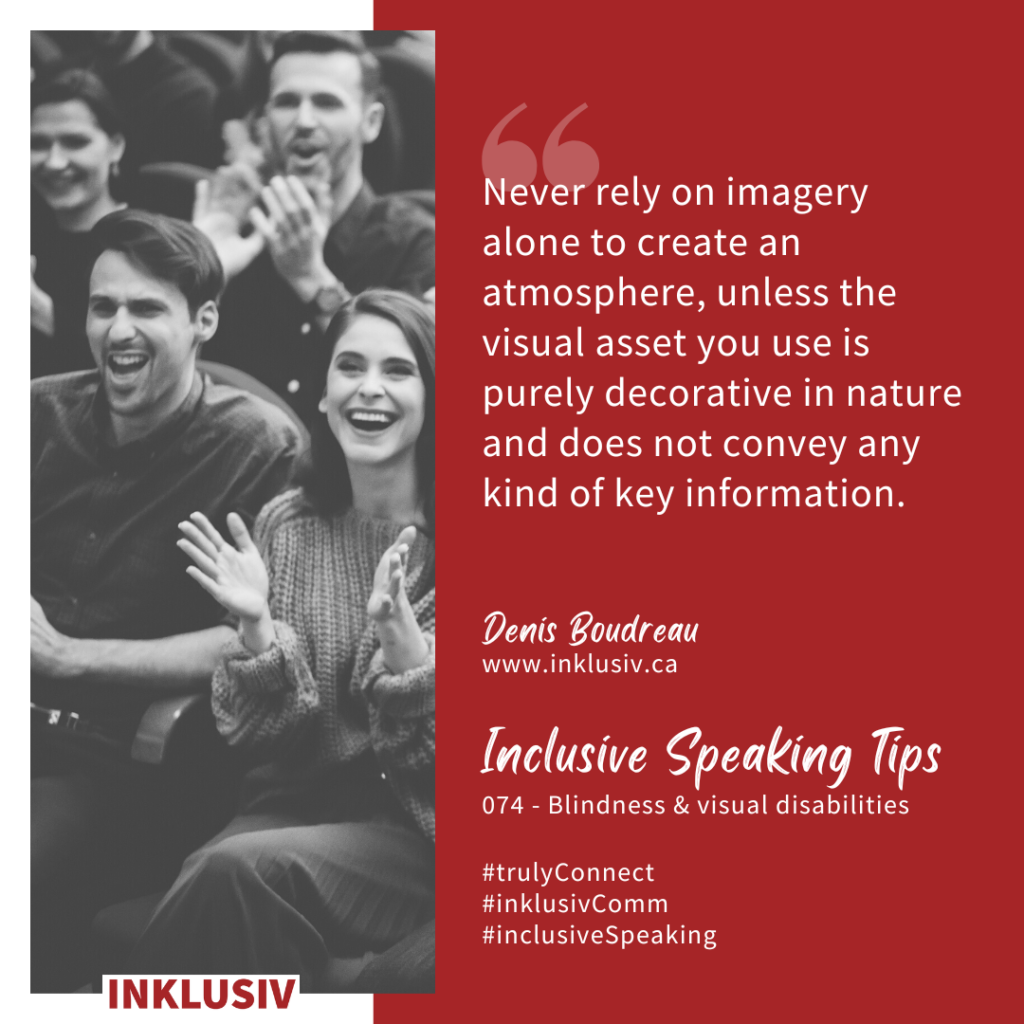

“Never rely on imagery alone to create an atmosphere, unless the visual asset you use is purely decorative in nature and does not convey any kind of key information.”
More details about Inclusive Speaking Tip #074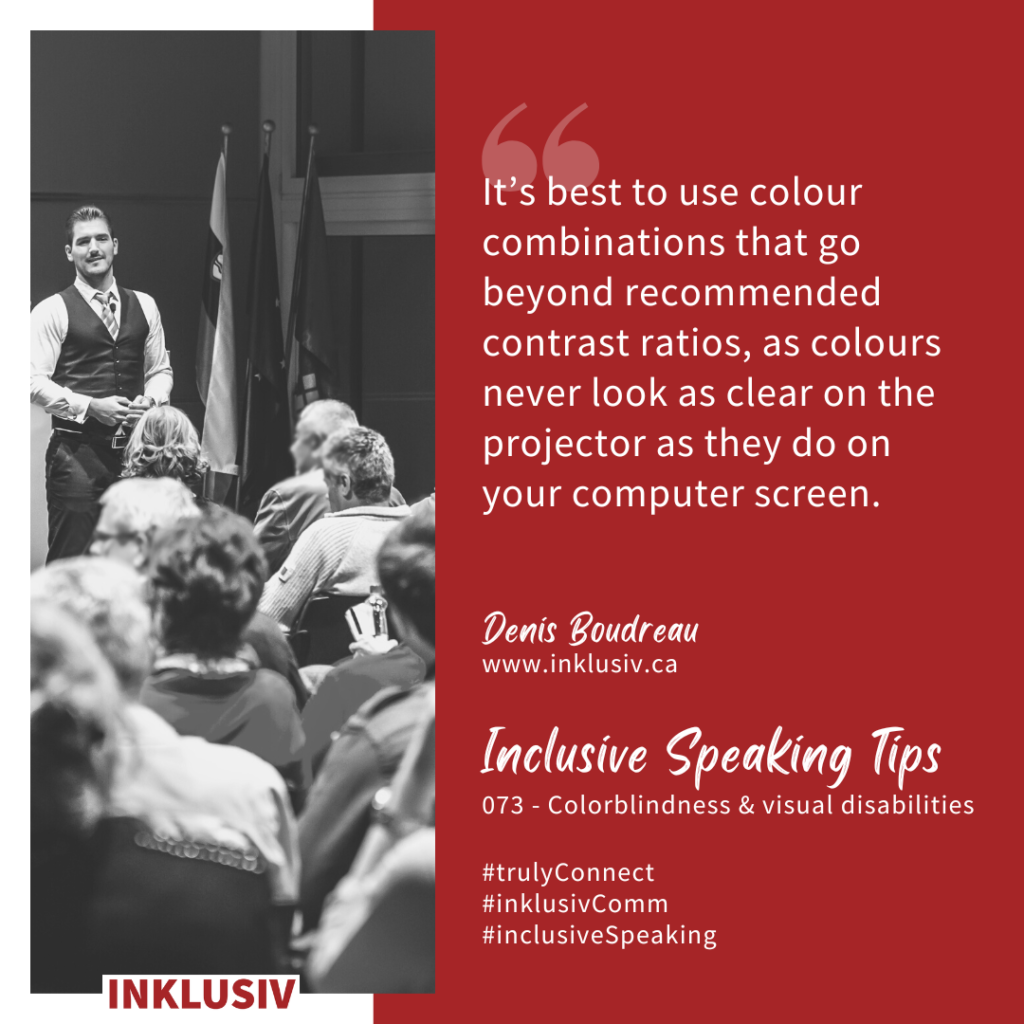

“It’s best to use colour combinations that go beyond recommended contrast ratios, as colours never look as clear on the projector as they do on your computer screen.”
More details about Inclusive Speaking Tip #073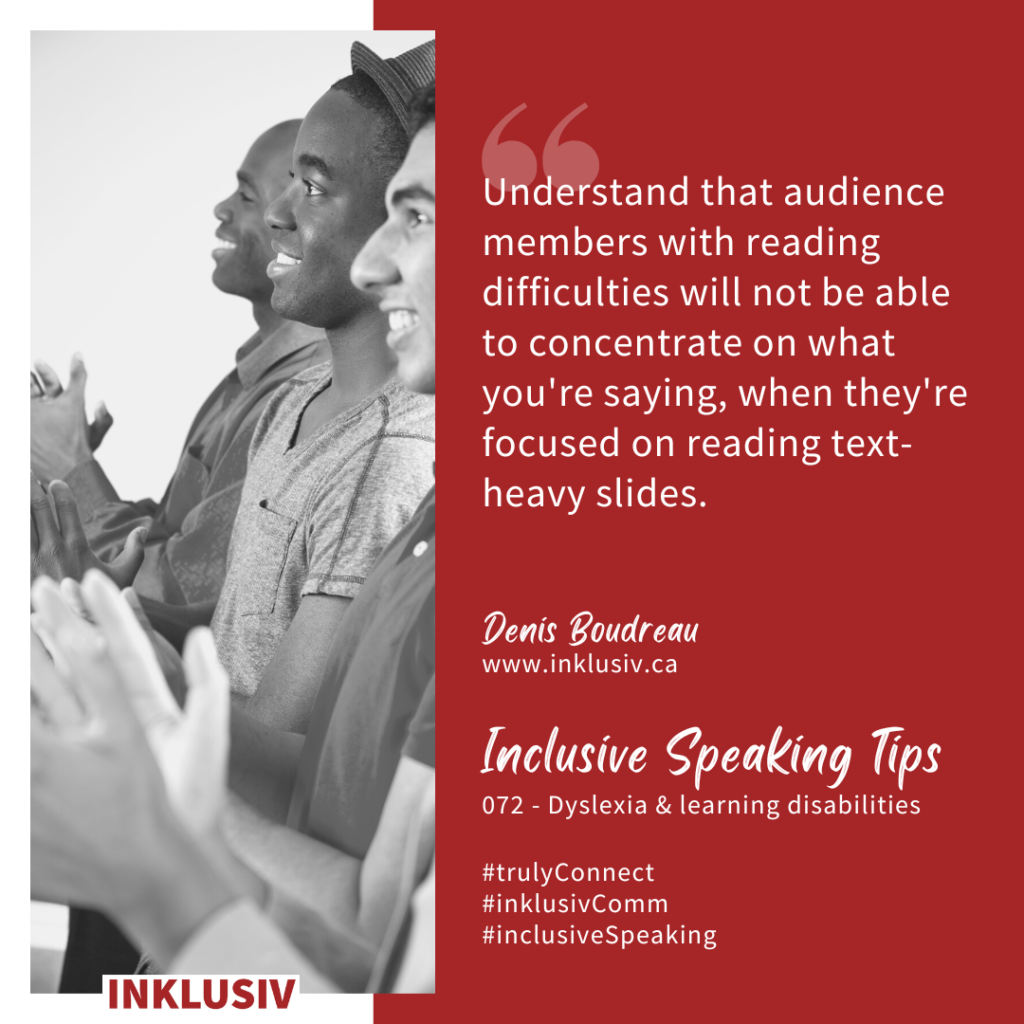

“Understand that audience members with reading difficulties will not be able to concentrate on what you’re saying, when they’re focused on reading text-heavy slides.”
More details about Inclusive Speaking Tip #072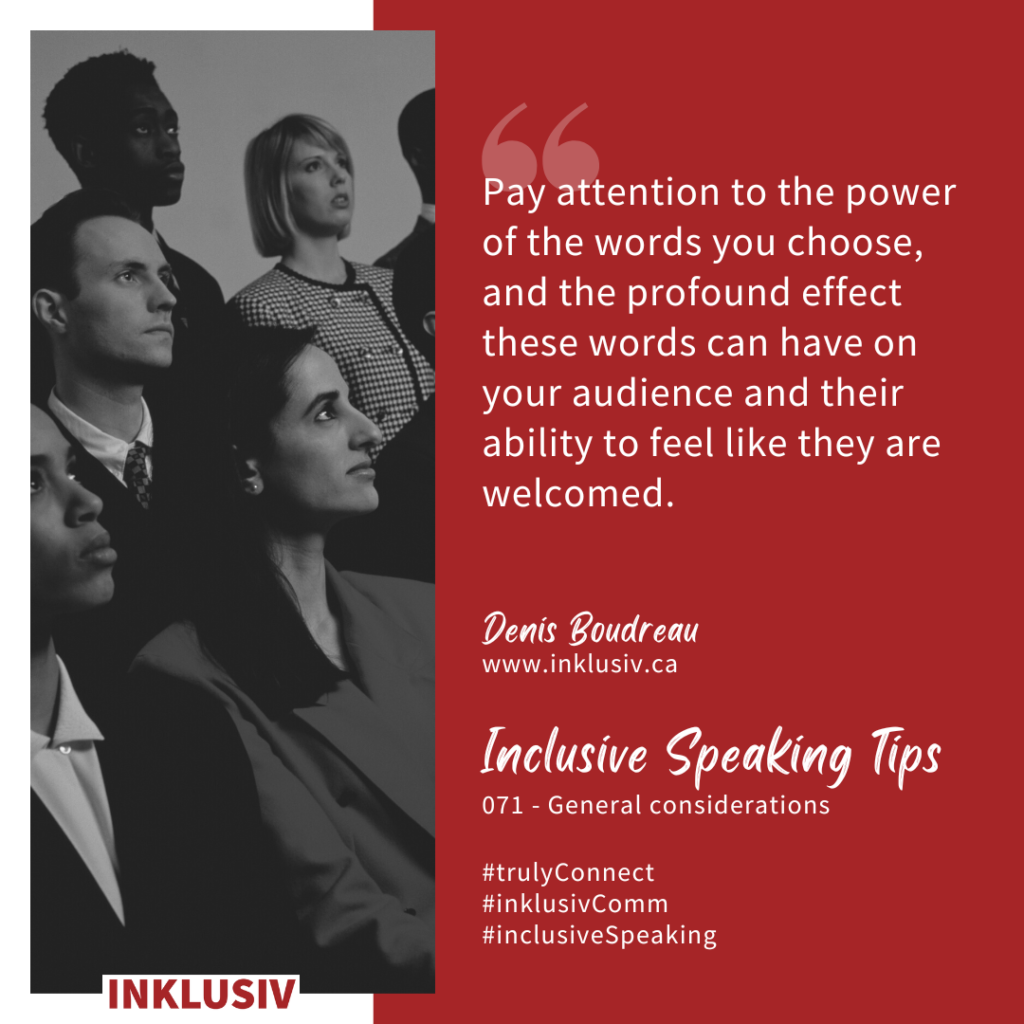

“Pay attention to the power of the words you choose, and the profound effect these words can have on your audience and their ability to feel like they are welcomed.”
More details about Inclusive Speaking Tip #071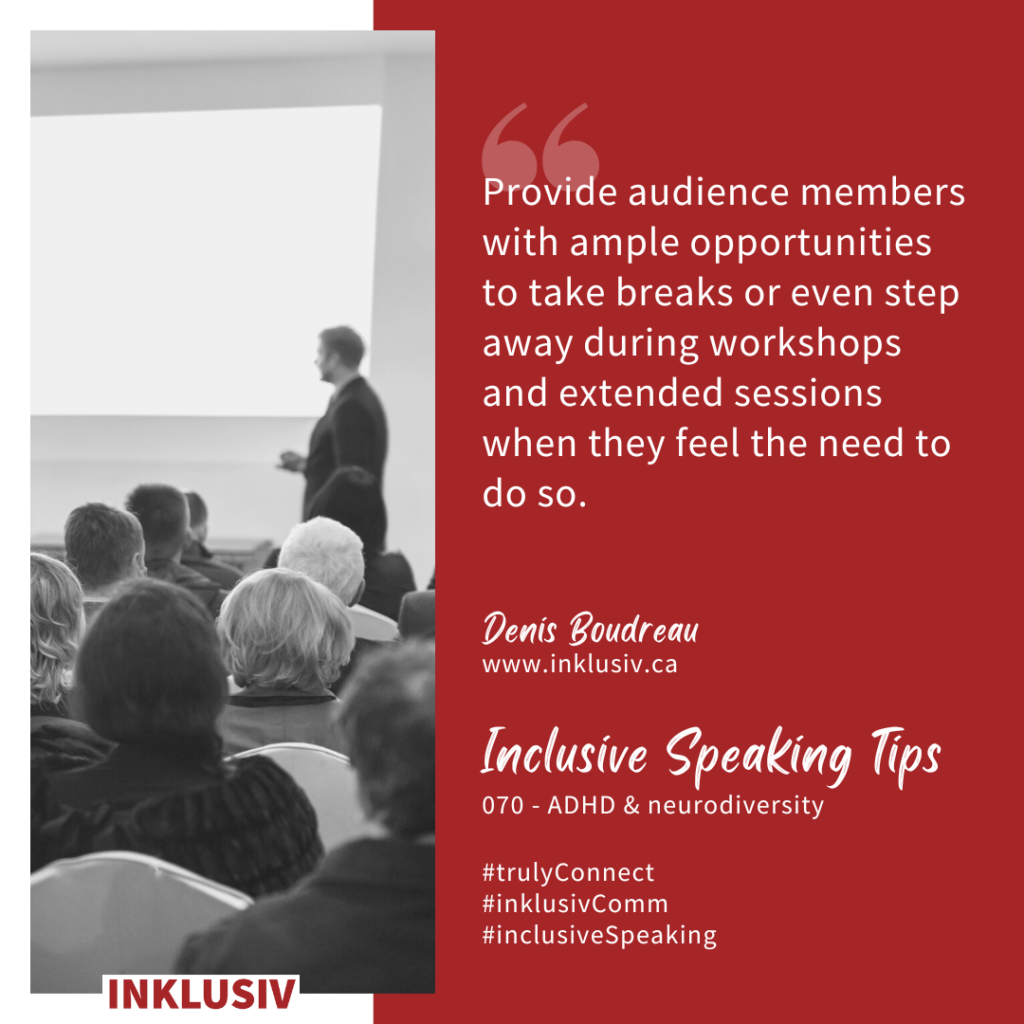

“Provide audience members with ample opportunities to take breaks or even step away during workshops and extended sessions when they feel the need to do so.”
More details about Inclusive Speaking Tip #070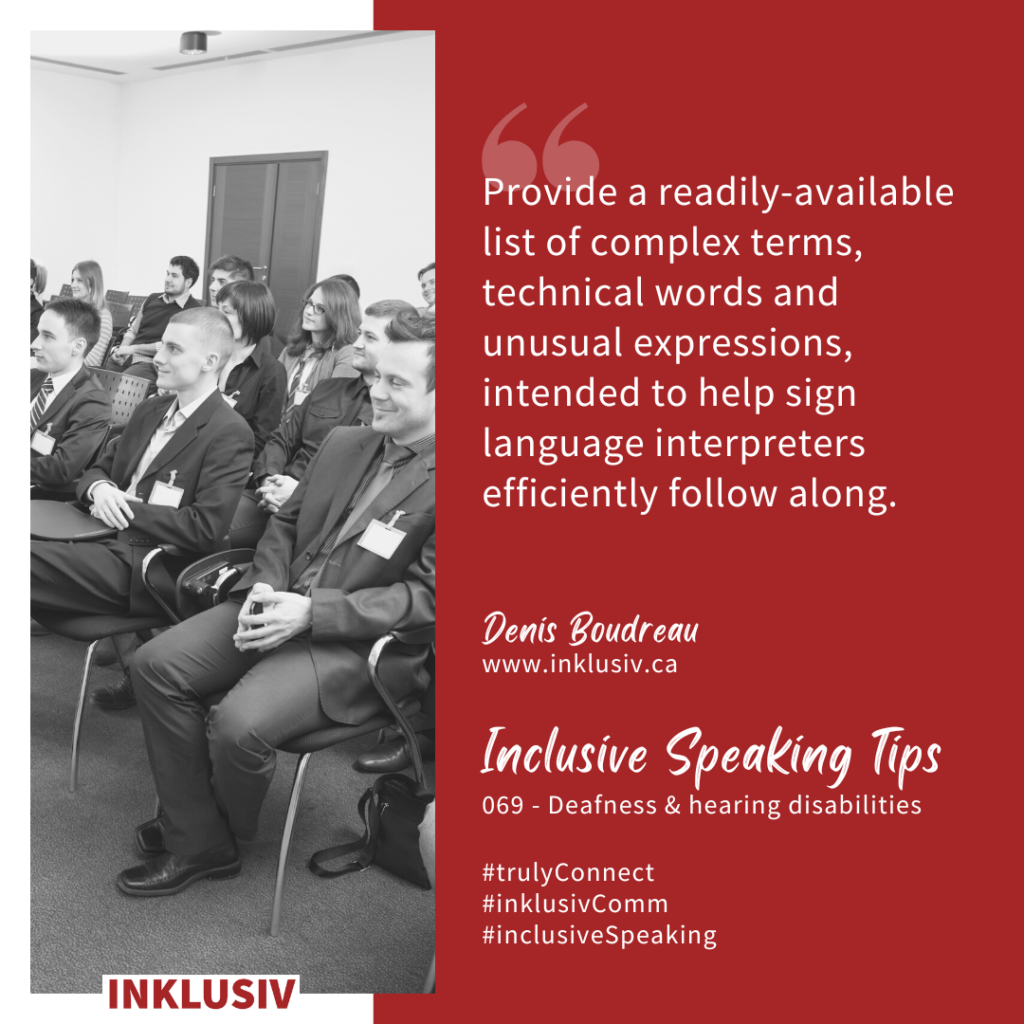

“Provide a readily-available list of complex terms, technical words and unusual expressions, intended to help sign language interpreters efficiently follow along.”
More details about Inclusive Speaking Tip #069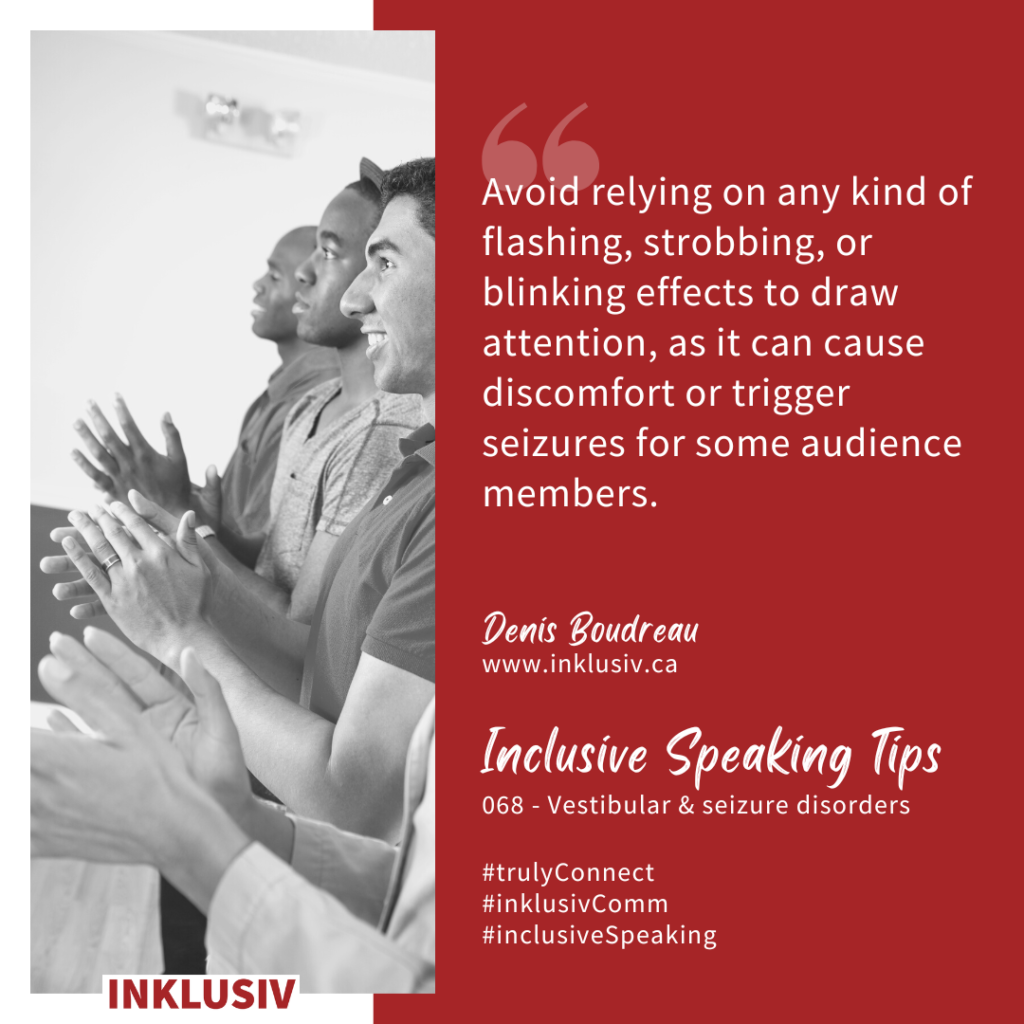

“Avoid relying on any kind of flashing, strobbing, or blinking effects to draw attention, as it can cause discomfort or trigger seizures for some audience members.”
More details about Inclusive Speaking Tip #068